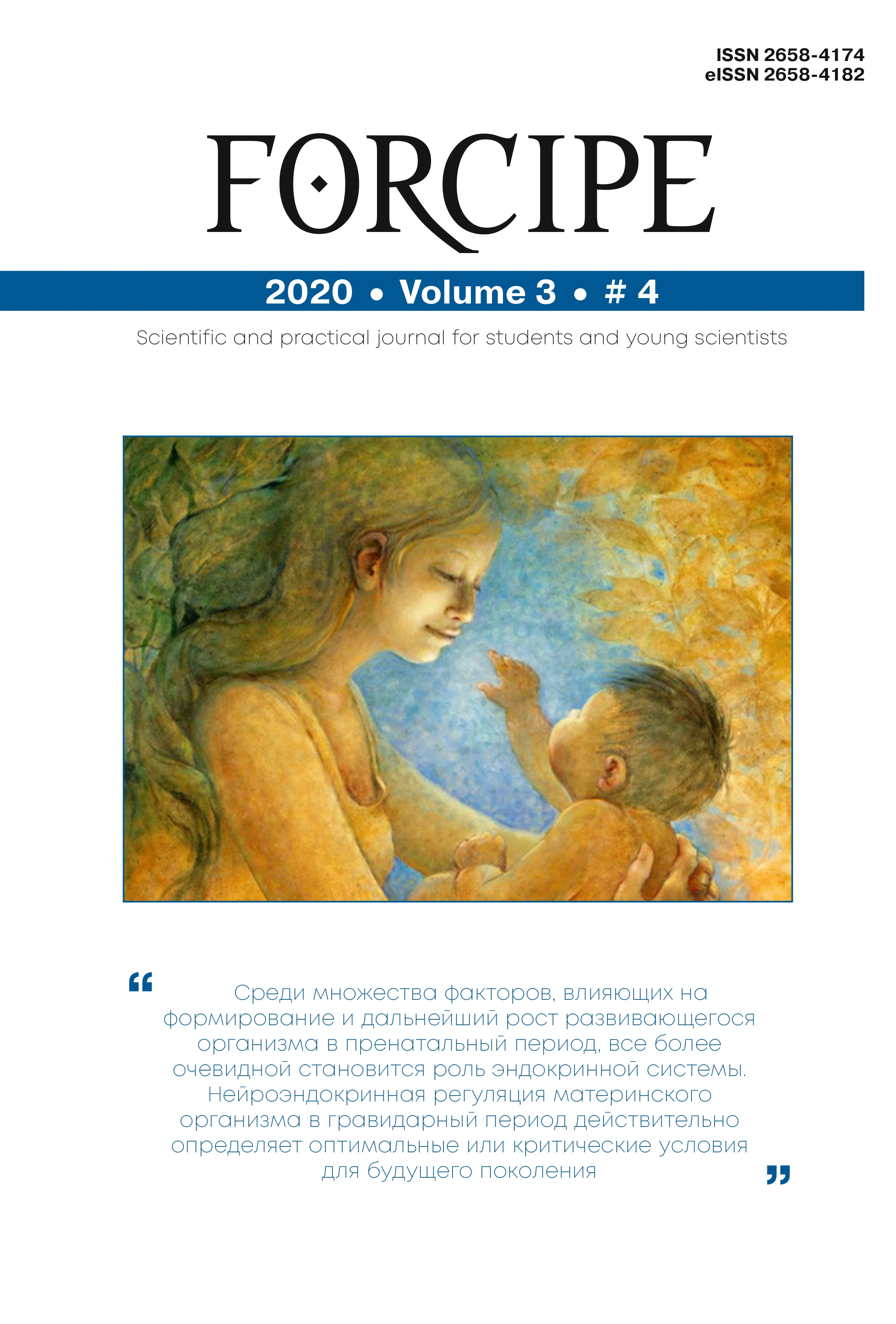MORPHOMETRIC CHARACTERISTIC OF NEPHRONOGENESIS IN THE KIDNEY OF UNMOUNTED CHILDREN WITH EXTREMELY LOW BODY WEIGHT AT THE STAGES OF POST-CONCEPTUAL DEVELOPMENT
Abstract
Aim. To identify the features of nephronogenesis in the kidneys of children with extremely low body weight, born as a result of prematurely premature birth, at a post conceptual age. Materials and methods. The kidneys and pathological protocols of children with ELBW who were born of early premature births at gestational periods of 23-27 weeks, who later died at different periods of post conceptual age, autopsy material 2013-2017 were studied. Pathology department of the Regional Clinical Hospital, Khanty-Mansiysk. Kidney histological specimens were achieved to light microscopy and computer morphometry using an Axio Imager microscope.Z1 (Zeiss, Germany) and AxioVisions 4.8.2. The definitions were made: the areas of the renal bodies, vascular glomerulus, the cavity of the capsule of Shumlyansky-Bowman, the areas of the distal, thin, proximal parts of the nephron, and the proliferative activity index was calculated using the Ki 67 marker using the standard method of counting per 100 cells, in 10 fields of view, and the degree of expression of cytokeratin 7 on 4 preparations was determined by the semi quantitative method on a 3 point scale (0 - point no reaction; 1 - point weak reaction; 2 - points medium strength; 3 - points strong reaction). Results. Kidney nephrons of children with ELBW are characterized by an atypical increase in the size of the renal corpuscles, tubules, significantly exceeding the corresponding indicators of kidney nephrons in full term children. Stem tubular dissociation is observed, which is manifested by uneven development of the nephron divisions, increased cell proliferation of the superficial zone of the kidneys in comparison with intracortical. Intracortical nephrons were characterized by uneven blood supply to the glomerular capillaries, signs of dystrophic changes in the canalicular epithelium. Conclusion. The revealed features of the kidney nephrons of children with ELBW can be considered as manifestations of desynchronous nephronogenesis, or rather dysontogenetic nephronogenesis, which is the structural basis for reducing the functional reserve of the kidneys and the risk of renal failure in subsequent periods of postnatal life.



